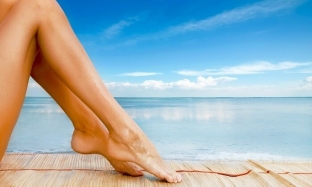In the velvet season, the issue of safe tanning becomes especially relevant, since many people prefer to go on vacation to seaside resorts at this time. Everyone knows that sunscreen is the most necessary thing in a vacationer's suitcase, and the shelves of supermarkets, cosmetic stores and even pharmacies are full of a variety of sprays, oils and sun creams. However, a safe tan can only be guaranteed by an individual sun protection scheme selected with the help of an experienced specialist. What every cosmetologist should know and tell his patients about safe tanning - read on estet-portal.com right now.
A beautiful and safe tan is a task for a beautician
First of all, everyone should understand that even the most effective sunscreen is not a 100% guarantee of a safe tan.
No matter how much cream or oil a person puts on their skin, it cannot prevent harm from many hours of exposure to scorching ultraviolet rays.
Therefore, one can only talk about safe tanning if the patient adheres to all the recommendations of the cosmetologist, uses the right product, but at the same time does not expose his skin to excessive exposure to sunlight.
Safe tan:
- Sun protection properties for safe tanning;
- main ingredients in sunscreens;
- 5 important rules for a beautiful and safe tan in summer.
Properties of sunscreens for safe tanning
The use of sunscreen for safe tanning can reduce sun exposure, but not completely eliminate it. There are two types of ultraviolet rays:
- type A rays are responsible for darkening the skin, that is, for the tan itself;
- Type B rays cause skin redness and pain.
Most sunscreens protect the skin from ultraviolet B rays, and only a few of them reduce exposure to type A rays. In addition to sunburn, the latter are also the main cause of the pathological transformation of skin cells. That's why safe tanning means choosing a sunscreen that reduces the effects of both types of UV rays on the skin.

The main ingredients in sunscreen
Beauticians should also be aware that sunscreens may contain chemicals that absorb UV and physical substances that reflect it. The former are called filters, and the latter are called screens. Physical shields include zinc oxide and titanium dioxide, which are easily removed from the skin within a few hours of sunscreen application, so if using creams and oils with physical shields, reapply after each bath, skin-to-cloth contact, or every 2 hours. Chemical filters are unstable after exposure to ultraviolet light. Absorbing the sun's rays, chemical molecules change their structure after a while and can turn into free radicals that are dangerous for the skin.
5 important rules for a beautiful and safe tan in summerThere are a few more rules for safe tanning that the beautician should discuss with his patient before the start of the beach season:
- Sun sprays are not recommended as they can be inhaled causing damage and allergic reactions;
- do not use
- cosmetics with retinoids and hydroxyl acids while in the sun - this increases the sensitivity of the skin and reduces its protection; use of sunscreens based on vegetable and stone oils at the same time as sunscreens based on physical screens reduces the effectiveness of the latter;
- Sunscreens with a repellant effect are weaker than regular ones and cannot provide a safe tan, just like products with SPF less than 15;
- Sun protection of SPF 50 is the best option for effective skin protection and needs to be reapplied regularly.
A beautiful, even and, most importantly, safe tan is a whole science that every specialist in aesthetic medicine should master.Ugly spots on the patient's skin after a rest are spots on the reputation of a cosmetologist. For more information on how to properly care for your skin in summer, read on estet-portal.com in the "Cosmetology" section.






Add a comment